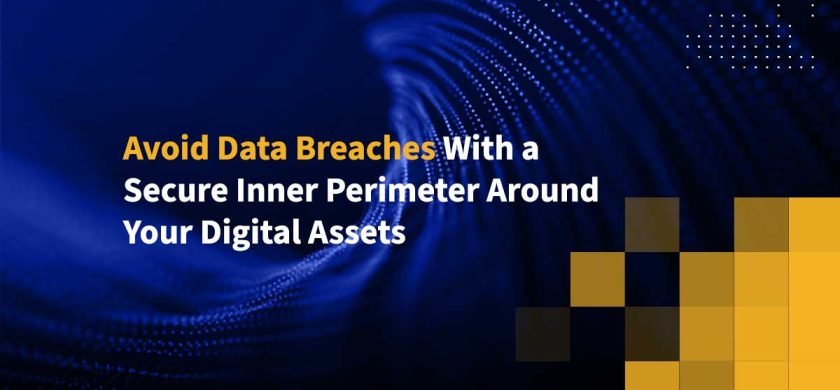
Avoid Data Breaches With a Secure Inner Perimeter Around Your Digital Assets
Your secure content communication channel must control every file saved and retrieved from every enterprise content repository to provide complete protection against a breach. Global data security, governance, and visibility require uniform access control, policy enforcement and monitoring of all content repositories across the extended enterprise. Unfortunately, large global organizations have a lot of sensitive content distributed across many disparate locations, including enterprise applications, ECM systems, network file shares and cloud storage services to name a few. Complex, varied storage locations increase the risk that sensitive information will leak undetected.
CISOs must enable secure content communication that balances the protection of sensitive content with the overwhelming need to share it, easing access while preventing breaches, ensuring privacy alongside transparency, and adhering to complex regulations without getting in the way of efficient communication. Each trade-off entails risks. This blog series explores these trade-offs and offers six guiding principles for creating a secure content sharing channel that enables work across the extended enterprise and protects your most sensitive digital assets.
In my last blog post, I discussed the need for organizations to eliminate shadow IT with a secure communication channel that shares sensitive content efficiently. Today, I'll discuss how CISOs can protect their organizations from a breach once they control every file saved and retrieved from every enterprise content repository.
If You Can't Consolidate Repositories, Consolidate Content Access Instead
The bad news is that the simplest solution to this problem—consolidating all enterprise content into a single repository—is not feasible for most organizations. Existing, distributed content stores are often too integrated into existing workflows and too expensive to migrate. Enterprise applications often require content in specific data formats. Regulatory requirements, such as national or regional data sovereignty rules, may prohibit the consolidation of content across international boundaries. And, highly sensitive content should be segregated to implement tighter security, such as multi-factor authentication. The good news is that you don't need to consolidate content physically. You just need to consolidate it virtually through metadata and controls to unify content access, security, governance, and visibility.
Ensure All Content is Shared Securely With Content Repository Connectors
By deploying connectors to content repositories that intercept, monitor, and manage storage and retrieval requests, you can create a secure inner perimeter around your most valuable digital assets that complements the secure external perimeter created by plugins to end user sharing applications. As files pass through this perimeter, granular permissions and detailed content scans can ensure that only authorized files are retrieved and sent externally, and only safe files are received and stored internally. Nothing falls through the cracks.
In my next post, I'll discuss how CISOs can prevent compliance failures with complete auditability. To demonstrate compliance with industry regulations and standards, organizations must have complete auditability of all content, content sharing, and all content-related systems, policies, and procedures.
To learn more about protecting your organization from a data breach, schedule a custom demo of Kiteworks today.
Frequently Asked Questions
Third-party risk management is a strategy that organizations implement to identify, assess, and mitigate risks associated with their interactions with third-party vendors, suppliers, or partners. These risks can range from data breaches and security threats to compliance issues and operational disruptions. The process typically involves conducting due diligence before engaging with a third party, continuously monitoring the third party’s activities and performance, and implementing controls to manage identified risks. The goal is to ensure that the third party’s actions or failures do not negatively impact the organization’s operations, reputation, or legal obligations.
Third-party risk management is crucial because it helps to identify, assess, and mitigate the risks associated with third-party relationships. This can include cybersecurity threats, compliance issues, operational risks, and reputational damage.
Policy controls are essential in third-party risk management as they establish clear expectations for third-party behavior, data handling, and security practices. They help mitigate the risk of security incidents by defining acceptable actions, and ensure third parties comply with relevant laws, regulations, and industry standards. Further, policy controls provide a foundation for monitoring third-party activities and enforcing compliance, allowing the organization to take appropriate action in case of policy violations. Thus, policy controls serve as a critical framework for managing third-party risks effectively.
Audit logs are integral to third-party risk management as they offer a comprehensive record of all third-party activities within your systems. They aid in identifying potential risks by highlighting unusual or suspicious activities, serve as a crucial resource during incident response and forensic investigations, and help ensure regulatory compliance by providing proof of effective security measures and third-party monitoring. In addition, they foster a culture of accountability and transparency among third parties, deterring malicious activities and encouraging adherence to security policies.
Kiteworks helps with third-party risk management by providing a secure platform for sharing and managing sensitive content. The platform is designed to control, track, and secure sensitive content that moves within, into, and out of an organization, significantly improving risk management. Kiteworks also provides two levels of email encryption, Enterprise and Email Protection Gateway (EPG), to secure sensitive email communications. This helps to protect against third-party risks associated with email communication.
Additional Resources
- Glossary Security Risk Management [Information Risk & Assessment]
- Blog Post HIPAA Compliant
- Blog Post HIPAA Security Rule Safeguards
- Glossary Why Cybersecurity Risk Management Matters
- Blog Post Data Compliance